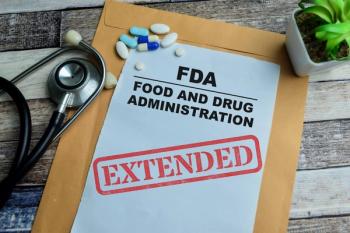
Presbyopic lens offers good functional vision for everyday tasks, study reveals
Results from a study revealed that patients in whom a dual-optic accommodating IOL (Synchrony, Visiogen) has been implanted bilaterally have good functional vision at near, intermediate, and distance in everyday tasks.
Key Points
Las Vegas-Patients in whom a dual-optic accommodating IOL (Synchrony, Visiogen) has been implanted bilaterally have good functional vision at near, intermediate, and distance in everyday tasks, Ivan Ossma-Gomez, MD, MPH, reported here at the American Academy of Ophthalmology annual meeting.
"When considering the reversal of presbyopia, most patients have similar goals, namely, unaided functional range of vision at distance, intermediate, and near as well as good quality of vision, which includes good contrast sensitivity and no unwanted visual phenomena," said Dr. Ossma-Gomez, assistant professor of ophthalmology, Instituto para Niños Ciegos y Sordos, Cali, Colombia.
He and colleague Andrea Galvis, MD, carried out a non-concurrent comparative case series that included patients who had undergone cataract surgery. The dual-optic IOL was implanted bilaterally in 17 patients, an apodized diffractive lens (AcrySof ReSTOR, Alcon Laboratories) was implanted bilaterally in 14 patients, and a refractive multifocal IOL (ReZoom, Advanced Medical Optics) was implanted bilaterally in 11 patients. All patients underwent pupillometry under photopic and mesopic conditions and measurement of the uncorrected visual acuity at near (distance, 30 and 40 cm), intermediate (distance, 50, 60, 70, and 80 cm), and distance vision. In addition, the patients' reading speed and contrast sensitivity were measured.
"Ninety-four percent of patients with the Synchrony IOL implanted achieved binocular distance vision of 20/40 or better compared with 100% of patients with both of the . . . IOLs. The binocular uncorrected near visual acuities were 20/40 or better in 100% of the patients who received the Synchrony IOL and 92% and 82% of the patients who received the ReSTOR and ReZoom IOL, respectively," Dr. Ossma-Gomez reported.
The patients with the Synchrony IOL fared better in the level of their intermediate vision. At 70 and 80 cm, 20/16 vision (–0.1 logMAR) was achieved in patients in whom the dual-optic lens had been implanted, compared with levels of about 20/50 (0.4 log MAR) in the diffractive IOL group and about 20/32 (0.2 log MAR) in the refractive IOL group at the same distances. The difference in intermediate visual acuity was significant (p = 0.02 and p = 0.01) for 70 and 80 cm, respectively, according to Dr. Ossma-Gomez.
The patients' reading speeds were similar between those receiving the dual-optic and diffractive IOLs-at 167.0 ± 19.5 and 167.3 ± 22.4 words per minute, respectively-and were slightly better than the speeds of those in the refractive IOL group, at 154.3 ± 23.9 words per minute. The difference among the three IOLs did not reach statistical significance.
Newsletter
Don’t miss out—get Ophthalmology Times updates on the latest clinical advancements and expert interviews, straight to your inbox.










































